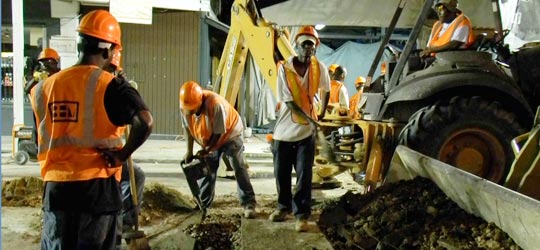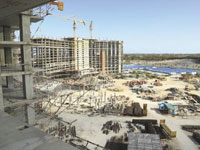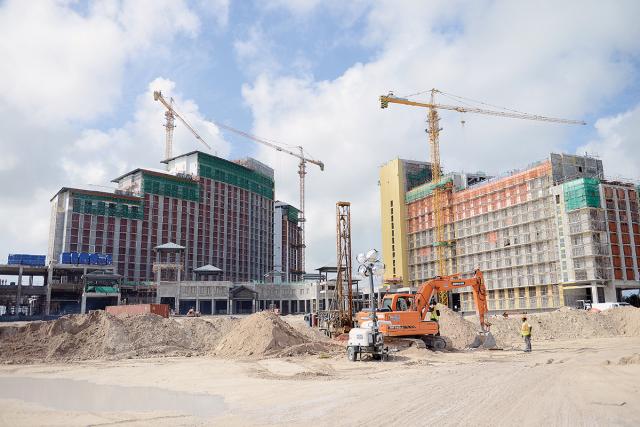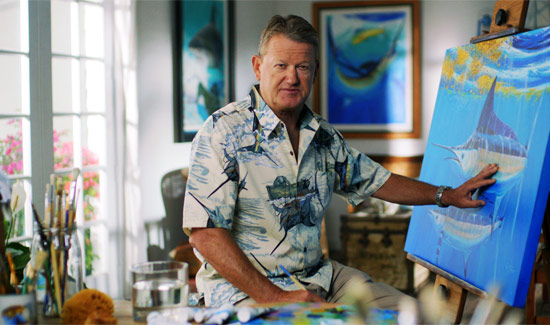
Nassau, The Bahamas – Inches of water pipes have been laid all over New Providence totalling almost 380,700 feet of infrastructure improvements, according to the June 2011 Budget Communication now being debated in the House of Assembly.
The Bahamas Government has invested almost $31 million to update the 83-year-old cast iron pipes with PVC water mains to correct the Water and Sewerage Corporation’s (WSC) productivity problem of reducing non-revenue water (NRW).
“The opportunity for the Corporation to become a financially viable entity is slim unless it resolves the challenges it faces relative to its high rate of Non-Revenue Water. This conclusion is consistent in all the professional reviews done on the Water and Sewerage Corporation,” said Phenton Neymour, Minister of State for the Environment.
“In addition, while, the focus has always been on the island of New Providence, and rightly so, the Family Islands with its high cost of water, has high NRW figures resulting in financial losses of nearly $7m annually. A sizeable proportion of Non- Revenue Water is water that is leaked out of the system because of an aged piping and distribution network.”
Transformed areas so far include Blue Hills Estates, Regency Park, Joan’s Heights, Bamboo Town, High Vista, Deal’s Heights, Buttonwood Drive, Peter Street, Deveaux Street, Imperial Park, Pine Barren Road, Catherine Street, Marshall Road, Fire Trail Road, Cow-pen Road, Eastern Road. Fox Hill Road, Domingo Heights, Step Street Area, Hanna Road, Kool Acres, Kent Avenue and York Street, Sherwood Drive, Tower Estates, Theodora Lane, parts of Eastern Estates, parts of South Beach, Johnson’s Estates, Eastern End of Yamacraw Hill Road, Nassau East South, Foxdale Subdivision, Coral Harbour East, Coral Harbour West, Winton Gravity System Transmission Main, Danottage Estates, Blair and Golf Course Boulevard in Sea Breeze.
Although WSC has tried to implement several action plans since 2002, the only viable solution left to do was to advocate for funding to replace the ageing pipes.
“Over the years, much has been said regarding the challenges faced by the Water and Sewerage Corporation and several action plans have been prepared to address these challenges and transform the Corporation into a financially and operationally sustainable entity,” said Mr. Neymour.
“In 2002, Mr. Speaker, a Corporate Business Plan was produced using funding from the Inter-American Development Bank (IDB). Emanating from that Business Plan, a three-year action plan was developed by the Corporation. In 2005, a National Water and Wastewater Plan were developed. Neither of these plans was ever fully approved nor implemented. Two years ago, in 2009, a Water and Sanitation Sector Strategic Plan was produced, utilising grant funding from the IDB.”
The plan identified the domino effect of several of WSC challenges. From the high 50 to 54 percentage of non-revenue water that costs WSC almost $16 million per year to how the NRW impacts the high cost of barging, shown to be more expensive than desalination and yet still yield water of a lower quality.
“The WSC has clearly shown that the cost of barged water is higher than that provided by a large-scale reverse osmosis plant. More importantly, barged water from North Andros is a less reliable source of water, and inferior in terms of water quality. It has undoubtedly served its purpose over the last quarter century, especially for an operation that was supposed to be temporary,” said Mr. Neymour.
“The Corporation recently issued a Letter of Acceptance to expand its desalination facility at Blue Hills by an additional 4 MIGD production, and are in final negotiations with a new supplier to provide 2 MIGD in the Western District to meet existing shortfalls. This will prepare us for new demands, like Baha Mar and other developments in the western district of New Providence.”
The IDB identified that the Government’s past failure to establish tariffs reflecting the cost of service, has resulted in substantial subsidies being paid out by the Government, regardless of the need to improve staff productivity to bring the Corporation in line with other, well-run utilities and international standards.
The IDB pointed out that the lack of productivity impeded the Government from being able to rehabilitate and expand sewerage facilities, resulting in community environmental failures, such as in Pinewood Gardens.
“The Water and Sewerage Corporation has not received a tariff adjustment since 1999, despite significant improvements in water quality and in service levels in both New Providence and the Family Islands,” said Mr. Neymour.
“Where services have improved, which always comes at great costs, tariff needs to reflect the cost of such services. This does not negate the need for the Corporation to become more efficient. In fact, to the contrary, it mandates that where persons must pay more for better service, it is incumbent on the Corporation to maintain the highest of standards.”
The utilities sector has been absent of regulation enforcement and best practices reform, which has hindered the WSC from establishing and enforcing transparency and independence of oversight service standards. Unfortunately, efficiency improvement can only happen with an expansion of private sector involvement to supervise the sector.
“The Seepage and Sludge Handling Facility located adjacent to the Public Landfill was commissioned in 1995. The original purpose was to treat and dispose of sludge from WWTPs and septic tank domestic waste via tanker trucks. Mr. Speaker, due to the absence of an alternative for non-domestic liquid waste site, coupled with the limited local regulations regarding the disposal of grease, oils, etc., any liquid waste that can be pumped into a tanker truck is disposed of at this facility,” said Mr. Neymour.
“The Corporation is seeking to engage the private sector and establish similar arrangements to that used for water production. This concept of BOO (Build Own Operate) contracts will expand private sector participation and investment by allowing successful firms to finance the capital required to build treatment plants, and then operate and maintain these plants over 15-20-year periods with the Corporation paying for the service based on the volume of waste treated.”
By Gena Gibbs
BAHAMAS INFORMATION SERVICES



